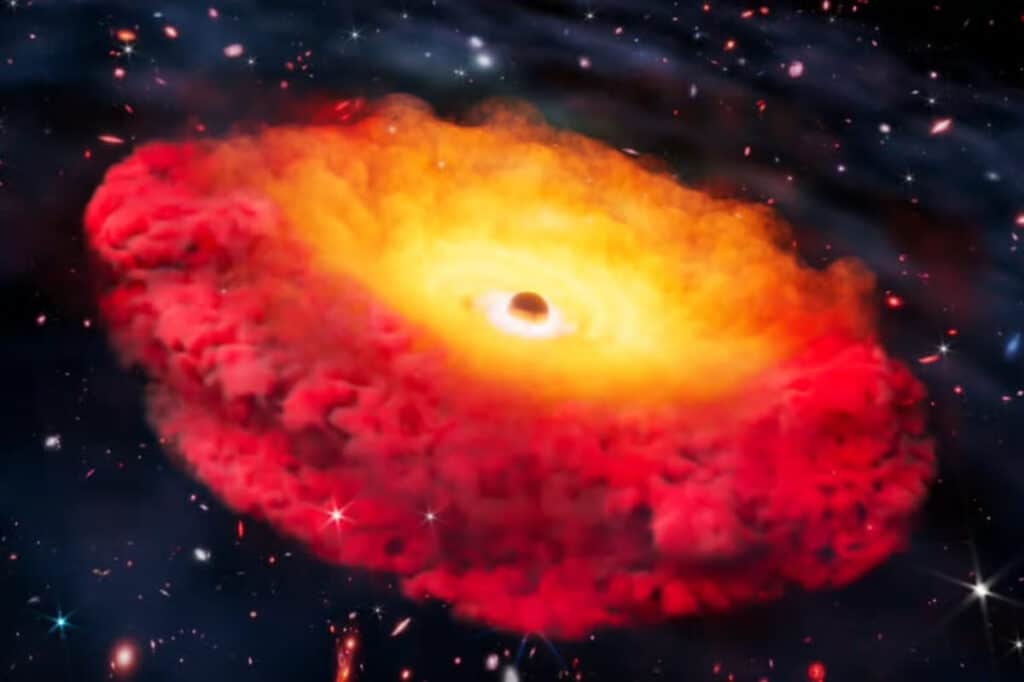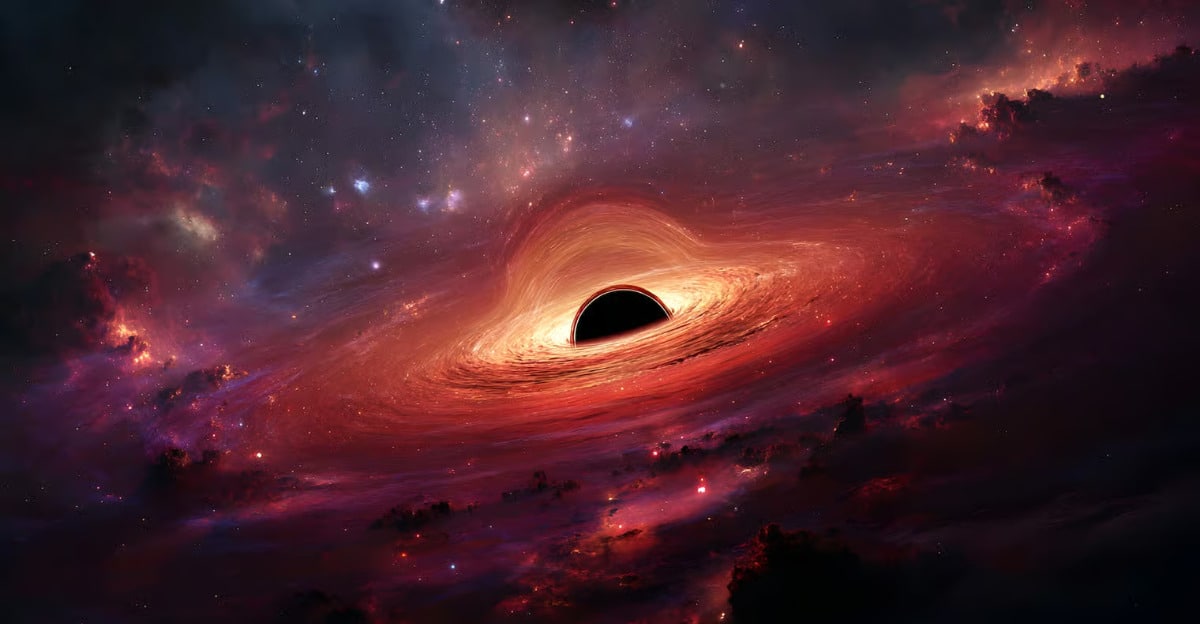The James Webb Space Telescope has once again expanded our cosmic horizons. This time, it has helped astronomers confirm the most distant supermassive black hole ever detected—a monster lurking at the dawn of the universe, just 500 million years after the Big Bang.
Launched in 2021, JWST has already transformed astronomy. It has spotted a tiny asteroid barely 200 meters across, revealed the dusty disks where planets take shape, and even uncovered galaxies as massive as the Milky Way when the universe was still in its infancy. Among its most dramatic finds are black holes billions of times the Sun’s mass, discovered at unexpectedly early stages of cosmic history.
Now, scientists at the University of Texas report that JWST has confirmed a new record-holder: a black hole in the galaxy Capers-LRD-z9, seen as it was 13.3 billion years ago.
Texas Research Impact: @TexasScience researchers are pushing the boundaries of astronomy.
Using @ESA_Webb data, they’ve confirmed the earliest known black hole — offering new insight into how galaxies formed in the early universe.
🔗 https://t.co/4PYmwj9SBy pic.twitter.com/Iurhu9PVh3
— UT Austin (@UTAustin) August 6, 2025
A cosmic fingerprint in light
The breakthrough comes from spectroscopy, which breaks light into its component wavelengths. Gas swirling into a black hole produces a distinctive pattern: light shifts red when moving away, blue when moving closer. Few cosmic objects display this telltale signature—but Capers-LRD-z9 does.
That, says astronomer Anthony Taylor, makes the case clear: “This galaxy carries the unmistakable mark of a black hole.”
The mystery of the “little red dots”
Capers-LRD-z9 belongs to a puzzling new class of galaxies JWST has revealed, nicknamed “little red dots.” Compact, bright, and visible only in the first 1.5 billion years of cosmic history, they defy easy explanation.
The evidence suggests their brightness doesn’t come from stars alone but from black holes blazing as they feed, heating matter to extreme levels. The galaxy’s deep-red color may come from a thick veil of gas around the black hole, pushing its light toward longer wavelengths.

This artist’s rendering of Capers-LRD-z9 shows the distant galaxy and the supermassive black hole at its center. The most distant black hole confirmed to date. It is surrounded by a thick cloud of gas that gives the galaxy its characteristic red color. © Erik Zumalt, University of Texas at Austin
A giant too big, too soon
The newly confirmed black hole is estimated at 300 million times the mass of the Sun—an astonishing figure, nearly half the mass of all the stars in its host galaxy. That scale poses a mystery: black holes are supposed to grow slowly by devouring matter over time. This one became enormous far too quickly.
“This adds to mounting evidence that the first black holes grew much faster than we expected,” explained Steven Finkelstein of the University of Texas. “Or perhaps they were born far more massive than our current models allow.”
For now, the discovery leaves scientists with more questions than answers. But with JWST’s next round of high-resolution observations, researchers hope to finally unlock the secrets of how the universe’s first black holes took shape—and why they grew so fast.
![]()
Nathalie Mayer
Journalist
Born in Lorraine on a freezing winter night, storytelling has always inspired me, first through my grandmother’s tales and later Stephen King’s imagination. A physicist turned science communicator, I’ve collaborated with institutions like CEA, Total, Engie, and Futura. Today, I focus on unraveling Earth’s complex environmental and energy challenges, blending science with storytelling to illuminate solutions.

